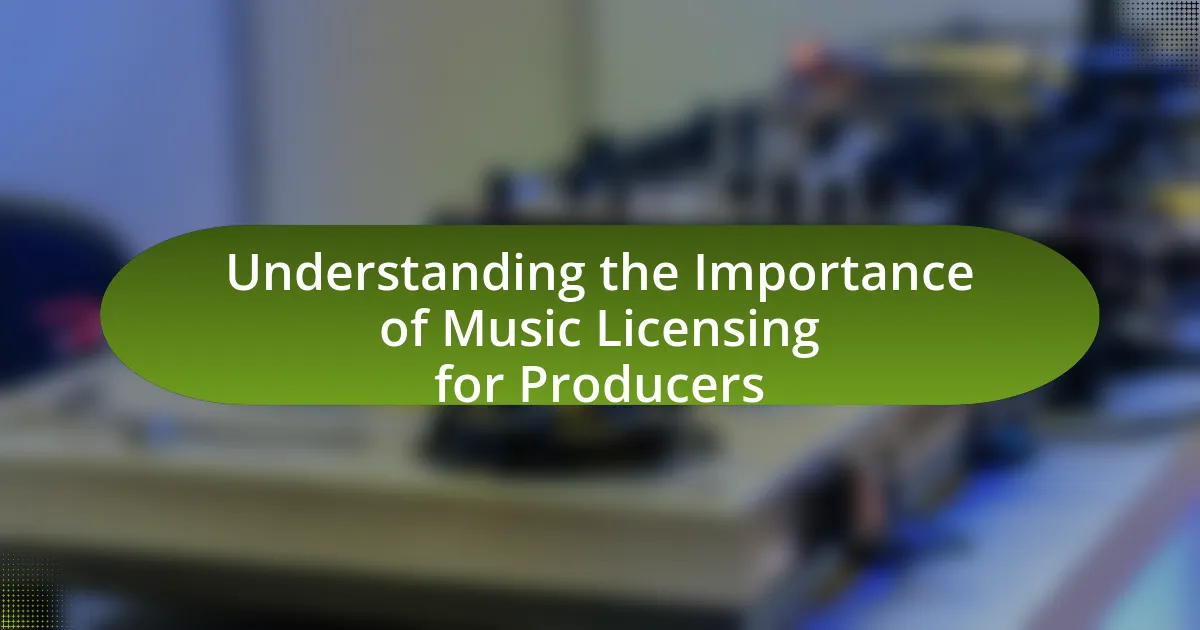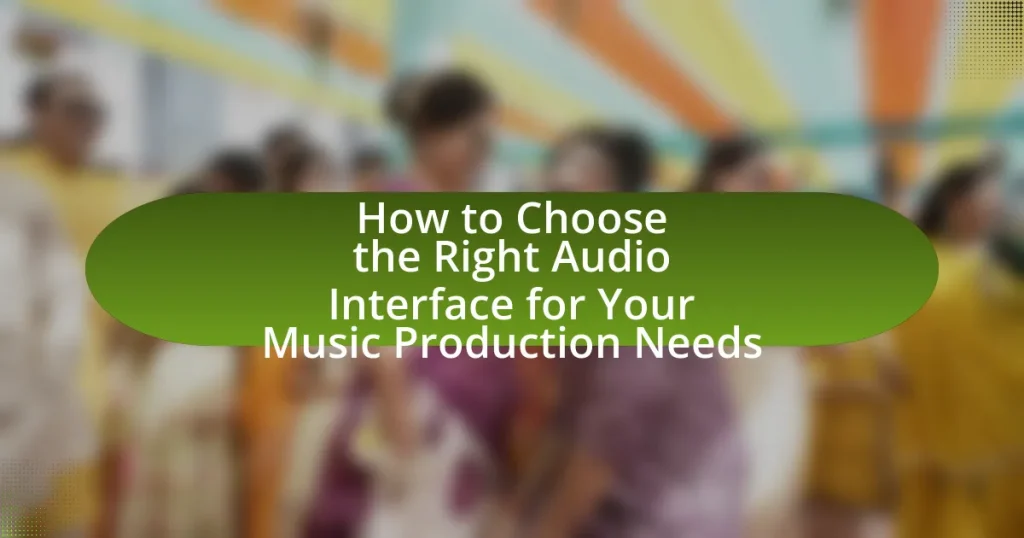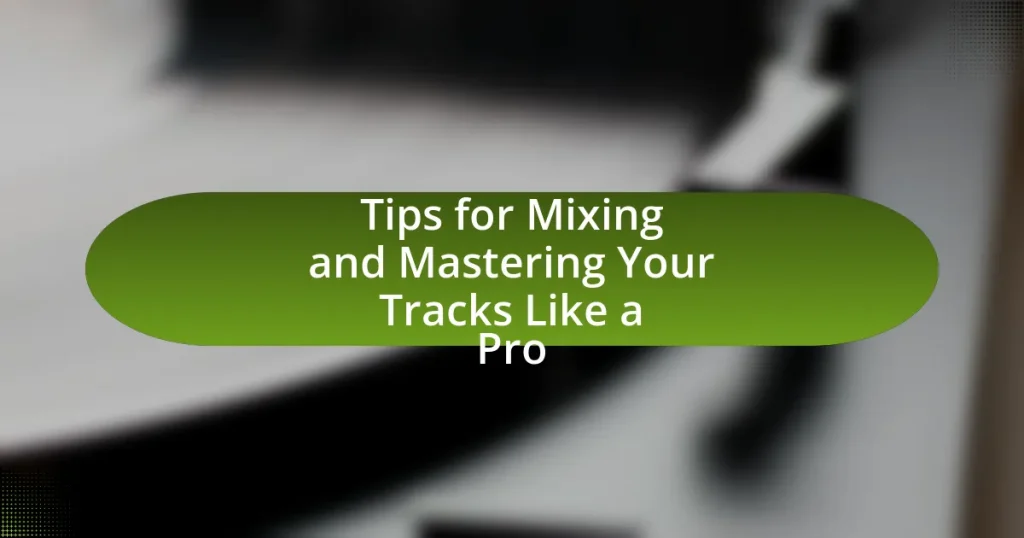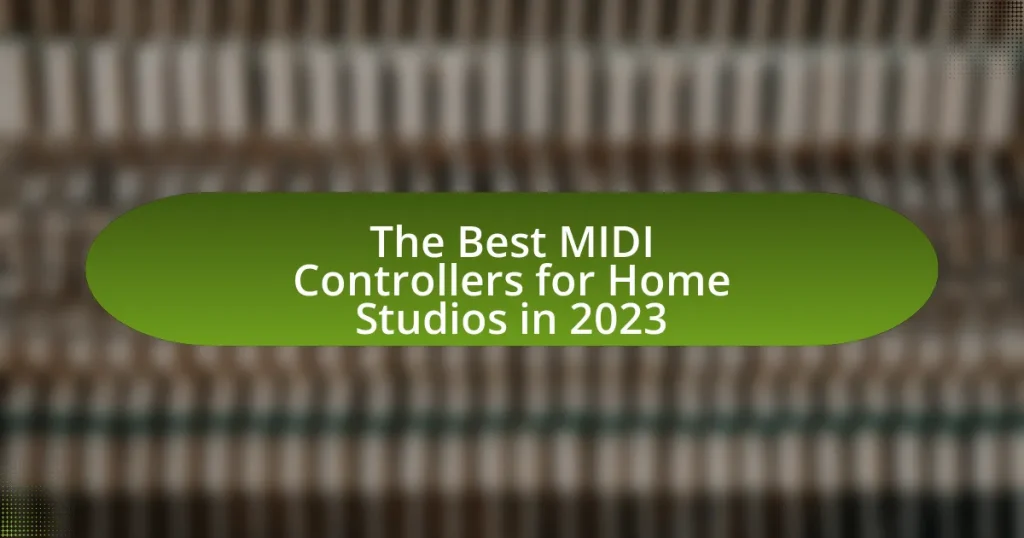Music licensing for producers is a critical legal process that grants permission to use music in various media projects, ensuring the rights of original creators are upheld. This article outlines the significance of music licensing, detailing its essential role in protecting producers from copyright infringement and enabling them to monetize their work. It covers the different types of music licenses, such as synchronization and mechanical licenses, and discusses the legal implications of using unlicensed music. Additionally, the article highlights the financial impact of licensing on production budgets, the creative decisions influenced by licensing, and the challenges producers face in navigating the licensing landscape. Best practices for compliance and relationship-building with music rights holders are also examined, providing a comprehensive understanding of the music licensing process for producers.

What is Music Licensing for Producers?
Music licensing for producers refers to the legal permission required to use music in various media projects, ensuring that the rights of the original creators are respected. This process involves obtaining licenses for different types of music usage, such as synchronization licenses for pairing music with visual content and mechanical licenses for reproducing music in physical formats. The necessity of music licensing is underscored by copyright laws, which protect the intellectual property of artists and composers, thereby preventing unauthorized use and potential legal repercussions.
Why is Music Licensing Essential for Producers?
Music licensing is essential for producers because it legally protects their work and ensures they can monetize their music without facing copyright infringement issues. By obtaining the appropriate licenses, producers can use copyrighted music in their projects, such as films, advertisements, or video games, while avoiding potential legal disputes. According to the U.S. Copyright Office, unauthorized use of copyrighted music can lead to significant financial penalties, making licensing a crucial step in the production process. Additionally, music licensing allows producers to gain access to a wider range of distribution channels, enhancing their visibility and revenue opportunities in the competitive music industry.
What are the legal implications of using unlicensed music?
Using unlicensed music can lead to significant legal implications, including copyright infringement claims, which may result in monetary damages, injunctions, and legal fees. Copyright law protects the rights of music creators, and unauthorized use of their work violates these rights, exposing individuals or organizations to lawsuits. For instance, the U.S. Copyright Act allows copyright holders to seek statutory damages ranging from $750 to $30,000 per infringement, and in cases of willful infringement, damages can escalate to $150,000. Additionally, using unlicensed music can damage reputations and lead to loss of business opportunities, as companies may face backlash for not respecting intellectual property rights.
How does music licensing protect producers’ rights?
Music licensing protects producers’ rights by legally granting them control over how their music is used and ensuring they receive compensation for its use. Through licensing agreements, producers can specify the terms under which their music can be reproduced, distributed, or performed, thereby safeguarding their intellectual property. For instance, the U.S. Copyright Act provides producers with exclusive rights to their works, allowing them to take legal action against unauthorized use. This legal framework not only deters infringement but also establishes a revenue stream through licensing fees, reinforcing the economic value of their creative contributions.
What Types of Music Licenses Exist?
There are several types of music licenses that exist, including synchronization licenses, mechanical licenses, performance licenses, and master use licenses. Synchronization licenses allow the use of music in audiovisual works, such as films and commercials. Mechanical licenses grant permission to reproduce and distribute music recordings, typically for physical formats like CDs or digital downloads. Performance licenses are required for public performances of music, whether live or through broadcasting. Master use licenses permit the use of a specific recording of a song in a project. Each type of license serves a distinct purpose in the music industry, ensuring that creators are compensated for their work.
What is a synchronization license and how does it work?
A synchronization license is a legal agreement that allows the licensee to use a specific piece of music in conjunction with visual media, such as films, television shows, or advertisements. This type of license is essential because it grants permission from the copyright holder, typically the songwriter or music publisher, to synchronize their music with visual content. The process involves negotiating terms, including fees and usage rights, ensuring that both parties agree on how the music will be used and compensated. Synchronization licenses are crucial for producers as they protect against copyright infringement and facilitate the legal use of music in their projects.
What is a mechanical license and when is it needed?
A mechanical license is a legal authorization that allows a party to reproduce and distribute a copyrighted musical composition in a physical or digital format. This license is needed when a producer or record label intends to create copies of a song, such as on CDs, vinyl, or digital downloads, ensuring that the original songwriter or copyright holder receives royalties for the use of their work. Mechanical licenses are typically obtained through organizations like the Harry Fox Agency in the United States, which facilitates the licensing process and ensures compliance with copyright laws.
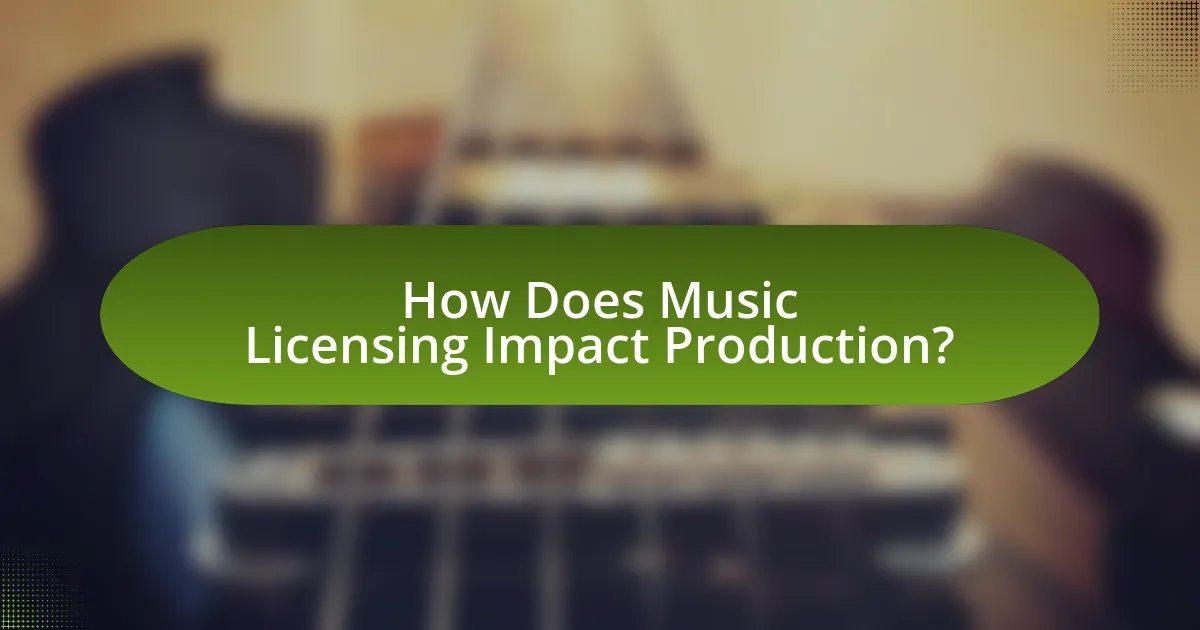
How Does Music Licensing Impact Production?
Music licensing significantly impacts production by determining the legal use of music in various media, which affects budget, creative choices, and distribution. Producers must secure licenses to avoid copyright infringement, which can lead to costly legal issues and project delays. For instance, a study by the American Bar Association highlights that unauthorized use of music can result in fines exceeding $150,000 per infringement. Therefore, understanding and navigating music licensing is crucial for producers to ensure compliance and protect their projects financially and creatively.
What are the financial implications of music licensing?
The financial implications of music licensing include costs associated with acquiring rights to use music, potential revenue generation through royalties, and the risk of legal penalties for unauthorized use. Producers must budget for licensing fees, which can vary significantly based on the type of music, the scope of use, and the duration of the license. For instance, a synchronization license for a popular song can range from hundreds to thousands of dollars, depending on the project’s scale. Additionally, licensed music can generate ongoing royalties for the rights holders, creating a revenue stream that can benefit producers if they negotiate favorable terms. Failure to secure proper licensing can lead to costly legal disputes, with penalties that may exceed the original licensing fees, emphasizing the importance of compliance in financial planning for music production.
How can licensing fees affect a producer’s budget?
Licensing fees can significantly impact a producer’s budget by allocating a substantial portion of financial resources to secure the rights to use music. For instance, if a producer intends to use a popular song, the licensing fee can range from hundreds to thousands of dollars, depending on the song’s popularity and the intended use. This expense can limit the budget available for other production elements, such as hiring talent or investing in marketing. Additionally, if a producer underestimates these fees, it can lead to budget overruns, forcing them to make cuts in other areas or seek additional funding. Thus, understanding and planning for licensing fees is crucial for effective budget management in production.
What potential revenue streams can arise from licensed music?
Licensed music can generate multiple revenue streams, including performance royalties, synchronization fees, mechanical royalties, and digital streaming income. Performance royalties are earned when music is played in public venues, broadcasted on radio, or streamed online, with organizations like ASCAP and BMI collecting these fees on behalf of artists. Synchronization fees arise when music is used in film, television, or advertisements, often negotiated directly between the rights holder and the producer. Mechanical royalties are generated from physical sales of music, such as CDs and vinyl, as well as digital downloads, with the statutory rate set by law. Digital streaming income comes from platforms like Spotify and Apple Music, where artists receive payment based on the number of streams. These revenue streams highlight the financial potential of licensed music for producers and artists alike.
How does music licensing influence creative decisions?
Music licensing significantly influences creative decisions by determining the availability and use of specific music tracks in various projects. Producers must navigate licensing agreements to ensure they can legally incorporate desired music, which can shape the overall tone, mood, and narrative of their work. For instance, a producer may choose a particular song that aligns with the emotional arc of a film, but if that song is not available for licensing or is prohibitively expensive, the producer may need to select an alternative that may not evoke the same impact. This necessity to comply with licensing restrictions can lead to compromises in artistic vision, as producers often have to prioritize tracks that fit within budgetary constraints and legal parameters.
What considerations should producers make when selecting licensed music?
Producers should consider the licensing terms, the target audience, and the emotional impact of the music when selecting licensed music. Licensing terms dictate how the music can be used, including duration, territory, and exclusivity, which are crucial for legal compliance and budget management. The target audience influences the genre and style of music that will resonate, ensuring that the chosen tracks align with the audience’s preferences. Additionally, the emotional impact of the music is vital, as it should enhance the narrative or message of the production, creating a more engaging experience for viewers. These considerations ensure that the selected music effectively supports the overall goals of the project while adhering to legal and financial constraints.
How can licensing shape the overall sound of a production?
Licensing can significantly shape the overall sound of a production by determining the types of music that can be legally used, which directly influences the emotional and aesthetic qualities of the final product. The selection of licensed tracks affects the mood, genre, and audience engagement, as specific songs can evoke particular feelings or memories. For instance, a study by the University of Southern California found that music licensing choices can enhance viewer retention and emotional response, demonstrating that the right licensed music can elevate the storytelling aspect of visual media. Therefore, the licensing process not only dictates legal usage but also plays a crucial role in crafting the sonic identity of a production.
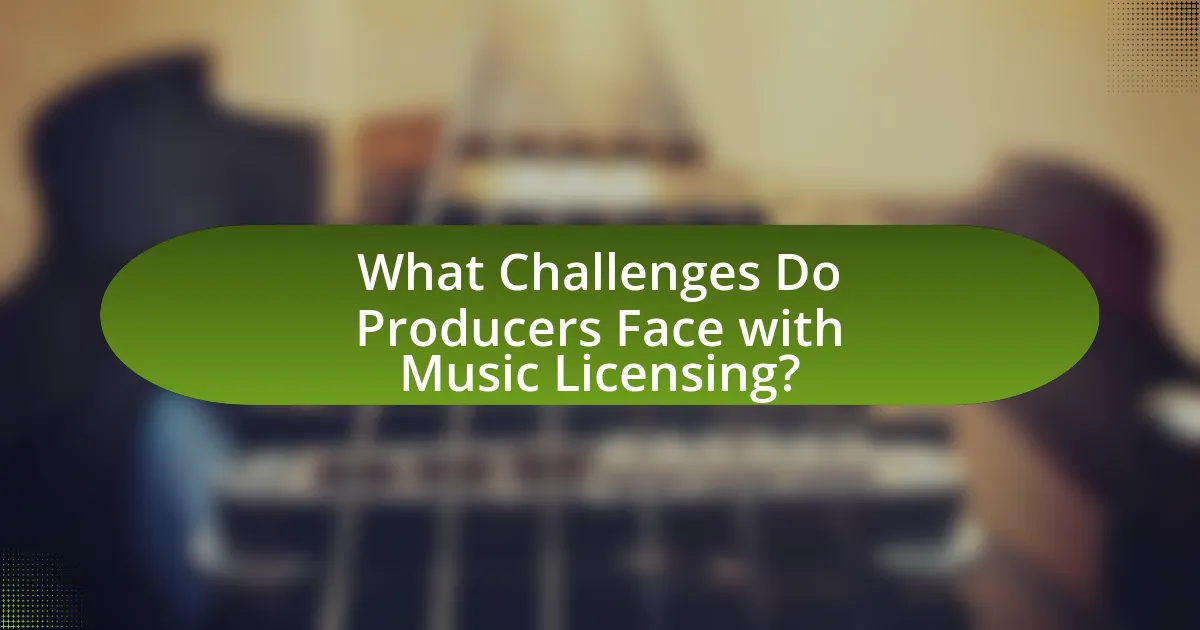
What Challenges Do Producers Face with Music Licensing?
Producers face several challenges with music licensing, primarily including the complexity of copyright laws, high costs, and the time-consuming nature of negotiations. Copyright laws can vary significantly by jurisdiction, making it difficult for producers to navigate the legal landscape effectively. Additionally, licensing fees can be prohibitively expensive, especially for independent producers, limiting their access to popular music. The negotiation process can also be lengthy, as producers must often deal with multiple rights holders, which can delay projects and increase costs. These challenges highlight the intricate nature of music licensing and its impact on production timelines and budgets.
What common pitfalls should producers avoid in music licensing?
Producers should avoid the common pitfalls of not securing proper licenses, failing to understand the terms of agreements, and neglecting to clear rights for all uses of the music. Not obtaining the necessary licenses can lead to legal issues and financial penalties, as unauthorized use of copyrighted music is a violation of intellectual property laws. Additionally, misunderstanding the terms of licensing agreements can result in unexpected costs or restrictions on how the music can be used, which can hinder a producer’s project. Lastly, neglecting to clear rights for all intended uses, such as synchronization for film or television, can lead to complications and potential lawsuits, as seen in cases where producers faced litigation for using music without comprehensive rights clearance.
How can misinterpretation of licensing agreements lead to issues?
Misinterpretation of licensing agreements can lead to legal disputes and financial losses for producers. When producers misunderstand the terms, such as usage rights, duration, or territorial restrictions, they may inadvertently violate the agreement, resulting in lawsuits or the need to pay damages. For instance, a producer might assume they have the right to use a licensed track in a commercial context when the agreement only permits personal use. This misstep can lead to significant penalties, as evidenced by cases where artists have sued for unauthorized use of their work, highlighting the critical need for clarity in licensing agreements.
What are the risks of using music without proper licensing?
Using music without proper licensing exposes individuals and organizations to significant legal risks, including copyright infringement lawsuits. Copyright holders have the right to take legal action against unauthorized use, which can result in substantial financial penalties, often amounting to thousands of dollars per infringement. Additionally, unlicensed use can lead to the removal of content from platforms, loss of revenue, and damage to reputation. According to the U.S. Copyright Office, unauthorized use of copyrighted music can also result in statutory damages ranging from $750 to $30,000 per work, depending on the circumstances.
How can producers navigate the music licensing process effectively?
Producers can navigate the music licensing process effectively by understanding the types of licenses required and establishing clear communication with rights holders. Familiarity with synchronization licenses for pairing music with visual media and mechanical licenses for reproducing music is essential. Additionally, producers should maintain organized documentation of all agreements and seek legal advice when necessary to ensure compliance with copyright laws. Research indicates that producers who invest time in understanding licensing requirements reduce the risk of legal disputes and financial penalties, thereby facilitating smoother project execution.
What resources are available for understanding music licensing?
Resources available for understanding music licensing include official websites, educational courses, and industry publications. The U.S. Copyright Office provides comprehensive information on copyright laws and licensing requirements. Additionally, organizations like the American Society of Composers, Authors and Publishers (ASCAP) and Broadcast Music, Inc. (BMI) offer resources and guidance on music licensing for creators. Online platforms such as Coursera and Udemy feature courses specifically focused on music licensing, covering essential concepts and practical applications. Industry publications like “Music Business Journal” and “Billboard” also provide insights and updates on licensing trends and regulations.
How can producers ensure compliance with licensing requirements?
Producers can ensure compliance with licensing requirements by thoroughly researching and obtaining the necessary licenses for all music used in their projects. This involves identifying the specific rights needed, such as synchronization licenses for audiovisual works and mechanical licenses for physical copies. Additionally, producers should maintain clear documentation of all licenses acquired, including terms and conditions, to avoid potential legal issues. According to the U.S. Copyright Office, failure to secure proper licensing can lead to significant financial penalties and legal disputes, underscoring the importance of adherence to licensing regulations.
What Best Practices Should Producers Follow for Music Licensing?
Producers should follow several best practices for music licensing to ensure legal compliance and protect their creative work. First, they must obtain proper licenses for all music used in their projects, including synchronization licenses for audiovisual works and mechanical licenses for physical copies. This is crucial because using music without permission can lead to legal disputes and financial penalties.
Additionally, producers should maintain clear documentation of all licensing agreements, including terms, duration, and payment details, to avoid misunderstandings and ensure transparency. They should also consider working with music licensing professionals or legal advisors to navigate complex licensing laws and negotiate favorable terms.
Furthermore, staying informed about copyright laws and industry standards is essential, as these can change and impact licensing practices. By adhering to these best practices, producers can safeguard their projects and foster positive relationships with artists and rights holders.
How can producers build relationships with music rights holders?
Producers can build relationships with music rights holders by actively engaging in networking opportunities and establishing clear communication channels. Networking at industry events, such as music conferences and festivals, allows producers to meet rights holders face-to-face, fostering personal connections. Additionally, maintaining open lines of communication through emails and social media helps producers stay informed about rights holders’ needs and preferences. Research indicates that 70% of successful collaborations in the music industry stem from strong interpersonal relationships, highlighting the importance of trust and rapport in these interactions.
What steps can producers take to streamline the licensing process?
Producers can streamline the licensing process by establishing clear communication with rights holders and utilizing digital licensing platforms. Clear communication ensures that all parties understand the terms and conditions, reducing the likelihood of misunderstandings that can delay the process. Digital licensing platforms, such as Songtradr or Music Licensing, provide efficient tools for managing rights and transactions, allowing producers to quickly access and secure the necessary licenses. According to a 2021 report by the International Confederation of Music Publishers, the use of technology in licensing has increased efficiency by up to 30%, demonstrating the effectiveness of these steps in expediting the licensing process.
